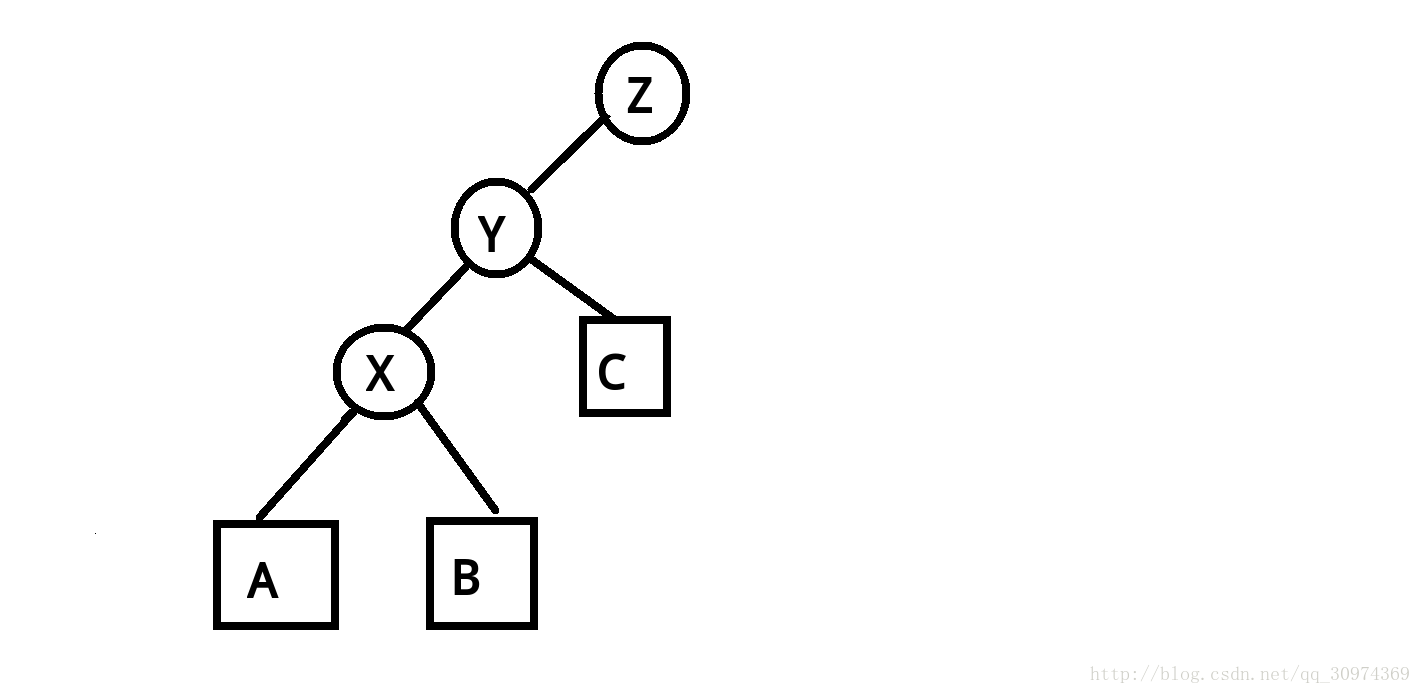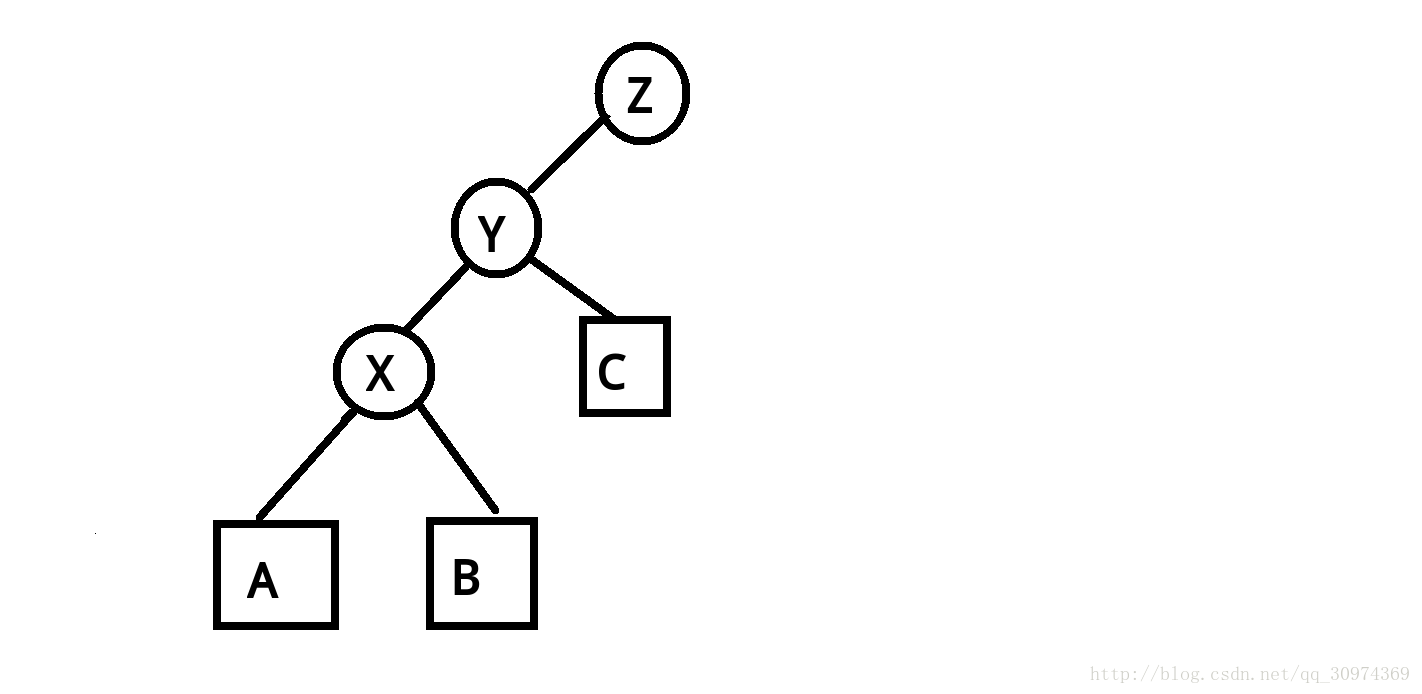Splay学习笔记
前面的话
HZ的人好像都学了Splay,讲题的人也经常说Splay,我校众神也都会Splay。
每次他们说Splay的时候我都说我不会太尴尬了,怒学Splay,学完之后真的感觉这是一种非常优美的数据结构。
概述
前置芝士:二叉搜索树
二叉排序树或者是一棵空树,或者是具有下列性质的二叉树:
若左子树不空,则左子树上所有结点的值均小于或等于它的根结点的值;若右子树不空,则右子树上所有结点的值均大于或等于它的根结点的值;左、右子树也分别为二叉排序树
同样的序列,因为排序不同,可能会生成不同的二叉排序树,查找效率性对就不一定了。如果是二叉排序树退化成一条链,效率就很低。
(以上是抄的)
注意到最后一句,于是就出现了一堆平衡树,用来提高BST的效率,避免BST退化成链的问题。
GMK跟我说Treap没用,我就先学了Splay(
各种操作
Splay是一种优化过的BST,它通过伸展操作自我调整,提升效率。
首先得看一个旋转操作,它是伸展操作的实现基础。
旋转
你看这个树它吼不吼哇 
图是盗的
不吼哇!x那边太长啦,效率太低。于是我们把x转到y,重构树的结构,就能使树的深度更优。
如何旋转能不改变BST性质?
首先,y > x,所以y应该安置到x的右子树。然后把x连到z。y缺了个左儿子(它原来是有的),x多了个之前的右儿子,且这个右儿子必定小于y,所以把x的右儿子接成y的左儿子。

这是这个图的情况,总共有4种,没有人会闲的去写4个函数,要找普遍规律:x原来是y的哪个子树,x的这个子树就不会变,因为y会换掉另外一个子树。
To be continued...
模板:[LOJ #104. 普通平衡树] (https://loj.ac/problem/104)
#include <bits/stdc++.h>
const int N = 3e5 + 233, INF = 0x3f3f3f3f;
int n;
struct Splay {
int root, tot, ch[N][2], siz[N], cnt[N], fa[N], val[N];
Splay() {
root = 1, ch[1][1] = 2;
val[1] = -INF, val[2] = INF;
cnt[1] = cnt[2] = 1;
siz[1] = siz[2] = 1;
fa[2] = 1, tot = 2;
}
inline int get(int x) { return ch[fa[x]][1] == x; }
void update(int x) { siz[x] = siz[ch[x][0]] + siz[ch[x][1]] + cnt[x]; }
void rotate(int x) {
int f1 = fa[x], f2 = fa[f1], id = get(x);
ch[f1][id] = ch[x][id ^ 1], fa[ch[f1][id]] = f1;
ch[f2][get(f1)] = x, fa[x] = f2;
ch[x][id ^ 1] = f1, fa[f1] = x;
update(f1);
}
void splay(int x, int goal = 0) {
while (fa[x] != goal) {
int f1 = fa[x], f2 = fa[f1];
if (f2 != goal) {
if (get(x) == get(f1))
rotate(f1);
else
rotate(x);
}
rotate(x);
}
update(x);
if (!goal)
root = x;
}
void find(int x) {
int p = root;
while (ch[p][x > val[p]] && x != val[p]) p = ch[p][x > val[p]];
splay(p);
}
void insert(int x) {
int cur = root, p = 0;
while (cur && val[cur] != x) p = cur, cur = ch[cur][x > val[cur]];
if (cur)
++cnt[cur];
else {
cur = ++tot;
if (p)
ch[p][x > val[p]] = cur;
ch[cur][0] = ch[cur][1] = 0;
val[cur] = x, fa[cur] = p;
cnt[cur] = siz[cur] = 1;
}
splay(cur);
}
int get_pre(int x) {
find(x);
if (val[root] < x)
return root;
int p = ch[root][0];
while (ch[p][1]) p = ch[p][1];
return p;
}
int get_nxt(int x) {
find(x);
if (val[root] > x)
return root;
int p = ch[root][1];
while (ch[p][0]) p = ch[p][0];
return p;
}
void remove(int x) {
int pre = get_pre(x), nxt = get_nxt(x);
splay(pre), splay(nxt, pre);
int del = ch[nxt][0];
if (cnt[del] > 1)
--cnt[del], splay(del);
else
ch[nxt][0] = 0;
}
int get_kth(int k) {
int p = root;
while (1) {
if (ch[p][0] && k <= siz[ch[p][0]])
p = ch[p][0];
else if (k > siz[ch[p][0]] + cnt[p])
k -= siz[ch[p][0]] + cnt[p], p = ch[p][1];
else
return p;
}
return 0;
}
} splay;
signed main() {
scanf("%d", &n);
for (int i = 1, opt, x; i <= n; i++) {
scanf("%d%d", &opt, &x);
switch (opt) {
case 1:
splay.insert(x);
break;
case 2:
splay.remove(x);
break;
case 3:
splay.find(x);
printf("%d\n", splay.siz[splay.ch[splay.root][0]]);
break;
case 4:
printf("%d\n", splay.val[splay.get_kth(x + 1)]);
break;
case 5:
printf("%d\n", splay.val[splay.get_pre(x)]);
break;
case 6:
printf("%d\n", splay.val[splay.get_nxt(x)]);
break;
}
}
return 0;
}
$ \Theta \omega \Theta $


 浙公网安备 33010602011771号
浙公网安备 33010602011771号